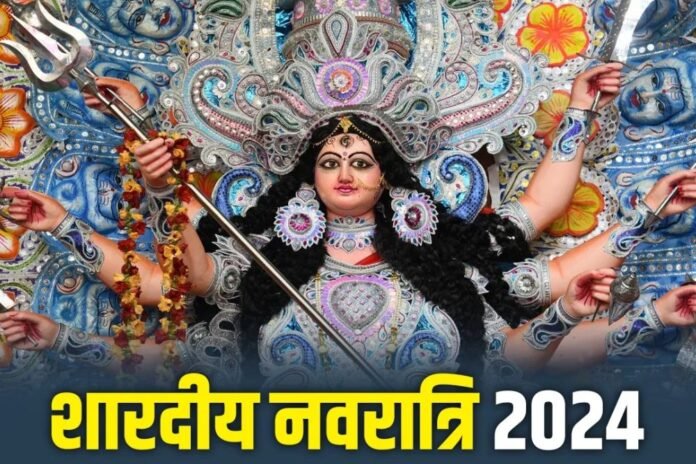Shardiya Navratri 2024: Sharadiya Navratri is about to come. As soon as Pitru Paksha i.e. Kshadha ends, the festival of Shardiya Navratri will start from the next day. Navratri falling in the month of Ashwin is called Sharadiya Navratri. Shardiya Navratri starts from Pratipada Tithi of Ashwin month till Dashami Tithi.
This year Navratri will be celebrated starting from 3rd October till Dussehra on 12th October. Navratri is celebrated in different ways in different parts of the country. During this time, nine forms of Goddess Durga are worshipped. Dandiya-Garba is organized. We all know that there is some reason for celebrating every festival. Similarly, there is a reason to celebrate Shardiya Navratri. Let us know about the mythological beliefs related to celebrating Navratri and the history related to it. (Shardiya Navratri 2024)
also read: Navratri 2024: Why is Kalash established on the first day of Navratri, know the history
Auspicious time for establishing Kalash
There are two auspicious times for installing the Kalash on the first day of Shardiya Navratri. The first auspicious time for setting up the Kalash is from 6.15 am to 7.22 am and for setting up the Ghat you will get 1 hour and 6 minutes. Apart from this, the time for establishing the Kalash in the afternoon is also in Abhijeet Muhurta. This is considered the best time. You can establish the Kalash anytime during the day between 11.46 am to 12.33 pm. You will get an auspicious time of 47 minutes in the afternoon.
Beliefs related to celebrating Navratri for nine days
According to religious texts, Mother Durga had fought a fierce battle with the demon Mahishasura and killed him. This war continued for nine days, and on the tenth day, Mother Durga killed Mahishasura and ended the demonic powers. It is believed that when Mother Durga killed Mahishasura, it was the month of Ashwin. For this reason, every year the festival of Navratri is celebrated for nine days from Pratipada of Ashwin month, which is called Sharadiya Navratri. In this festival, Mother Durga is worshiped and her powerful form is remembered, which symbolizes the victory of good over evil.
What is the history of celebrating Navratri?
There are many mythological stories associated with the holy festival of Navratri related to the worship of nine forms of Goddess Durga. According to a famous legend, the demon Mahishasura had the boon of immortality from Lord Brahma, according to which his death could neither be at the hands of any human, nor at the hands of a god, nor at the hands of a demon. His death was certain at the hands of only one woman. After this boon, Mahishasura became a tyrant and started harassing humans and gods. (Shardiya Navratri 2024)
Plagued by the atrocities of Mahishasura, all the gods turned to the Trinity—Brahma, Vishnu and Mahesh—for help. Then all the three Gods together invoked Adishakti, and from their glory Mother Durga was born, who was called Mahishasura Mardini. The gods bestowed upon him his weapons and powers, and Mother Durga challenged Mahishasura to a battle.
There was a fierce battle between Mahishasura and Maa Durga for 9 days, and on the tenth day, Maa Durga killed Mahishasura. Therefore the festival of Navratri is celebrated for nine days. It is believed that during the war, all the gods worshiped every day for nine days and provided strength to Goddess Durga to kill Mahishasura. Since then the tradition of celebrating the festival of Navratri started.
History of Navratri is related to Lord Shri Ram
According to another story, the story of celebrating the festival of Navratri for nine days is related to Shri Ram. According to this, when Ravana had abducted Mother Sita. Then, to achieve victory in the battle with Ravana and to free Mother Sita, Lord Rama performed the ritual of worshiping Goddess Durga for nine days and on the ninth day, Goddess Durga appeared and blessed Lord Rama for victory in the war. Lord Shri Ram killed Ravana on the tenth day. After this, the tradition of celebrating Navratri started and the effigy of Ravana is burnt on the tenth day.

